Gypsum is a naturally occurring mineral that can sometimes form giant and beautiful white, yellow, and orange crystals. However, it is commonly found in massive gypsum rocks in thick layers or beds within sedimentary rocks. Gypsum forms in lagoons where ocean water rich in sulfate and calcium slowly evaporates and gets replaced regularly by new water. In this article, let’s talk about gypsum for lawns.
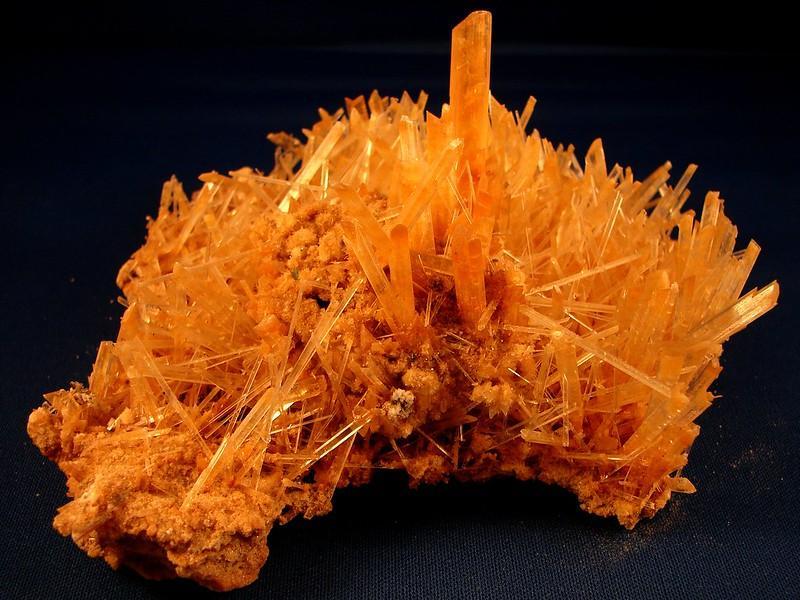
Gypsum is a naturally occurring mineral of hydrated calcium sulfate (CaSO4·2H2O).
Gypsum is widely used as a retarder in portland cement, a filler in paper and textiles, fluxing agent in the metal industry, and soil amendment in agriculture and gardening.
While farmers have used gypsum for centuries, it has recently received renewed attention. Gypsum is a good source of calcium and sulfur, which plants need for good yields. In addition, it improves the overall soil structure, reduces erosion, and increases the fertility of heavy clay soils, leading to better plant growth.
Some people also suggest using gypsum for amending acidic soils. However, its use as a liming material remains highly debated. Nevertheless, gypsum can help you create a beautiful lush lawn in certain situations. How? Read on to find out!
What Is Gypsum?
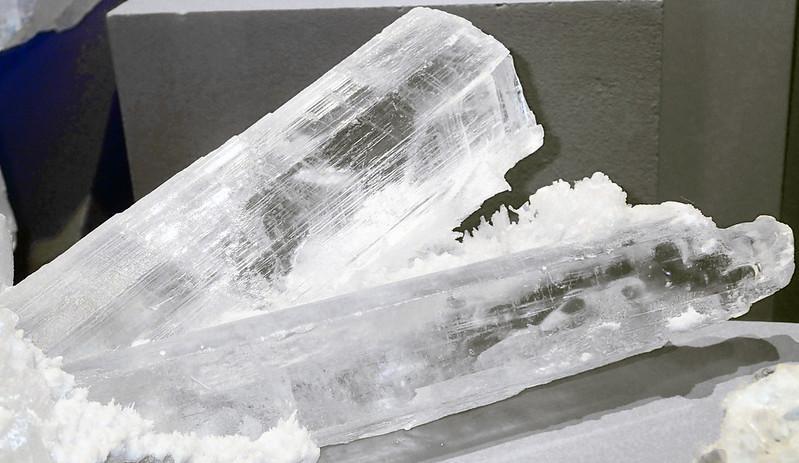
Gypsum is mined from sedimentary rock formations around the world.
Let’s start with the most basic question. What is Gypsum?
In layperson’s terms, gypsum is a soft, hydrated calcium sulfate mineral commonly found in large gypsum rocks in sedimentary rock formations worldwide. Gypsum is the most common sulfate mineral and is widely found deposited in the lake and seawater.
In nature, it is formed by the continuous evaporation and replenishment of waters containing sulfates and calcium. Gypsum, when mined, is immediately turned into a fine powder and boiled until most of its moisture is removed in a process called calcination.
The powder is then transported and used in various settings, such as:
- As a plaster in surgical casts
- As an additive in toothpaste and many foods
- As sidewalk or classroom chalk
- As a hardening element in Portland cement
- And, as a soil amendment in agriculture and gardening
Why Use Gypsum On Your Lawn?
At this point in the article, you must know that gypsum is a widely used soil amendment. But what exactly does it do for your soil, and how can that help your lawn?
While gypsum has many uses, the following are the main three:
It Reverses Aluminium Toxicity!
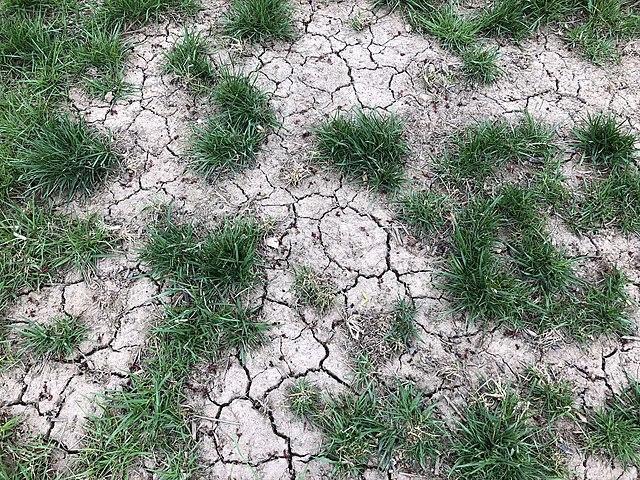
Signs of almunium toxicity in lawns are often the same as phosphorus deficiency.
Even though aluminum is found in considerable concentration in garden and lawn soil, it is not essential for plant life, including grass and houseplants. Instead, its presence in the ground can harm local plant life and animals. However, this does not mean that if you have aluminum in your lawn soil, it is going to kill the plants and animals there!
Aluminum only becomes toxic in acidic environments where the pH of the soil is below five, and it can cause significant harm if the pH drops below four.
Aluminum in the ground slows down root penetration and damages root growth, thus affecting the overall plant health. Only a handful of acid-loving plants, such as azaleas, and blueberries, can survive these high-aluminum and low-pH conditions.
Furthermore, aluminum toxicity is often not detected as standard soil tests performed for lawns & gardens do not cover or include soluble aluminum testing.
Signs of aluminum toxicity in lawns are often the same as phosphorus deficiency, including:
- Yellowing and death of leaf tips
- Purpling of leaves and leaf veins
- Purpling of stems, and
- Small, abnormally dark green leaves
So, if you have acidic soil, no phosphorus deficiency, and the grass on your lawn is still dying, we highly recommend getting an aluminum toxicity test.
Nevertheless, gypsum can help reverse soluble aluminum toxicity in the soil. Gypsum quickly reaches the subsurface soil near the plant root zone when applied. The calcium in the gypsum then displaces the soluble aluminum in the soil and helps it leech below the rooting area as long as there is enough moisture in the ground to draw it downwards.
Lime, another excellent lawn soil amendment material, can also treat soluble aluminum toxicity in the soil. However, it takes about 18 months to move down in the ground and show the same benefits as gypsum, which only takes 3 to 4.
RELATED: Common Lawn Weeds and How To Identify Them | A Comprehensive Guide
It Adds Calcium To The Soil!

Calcium stimulates the lawn and the plants’ metabolism and enzyme activity.
Grass needs nutrients, including calcium, to maintain healthy growth and resist pests and diseases. Calcium is a micronutrient that acts as a defense between your grass and various bacteria, viruses, and fungi. A calcium-rich lawn also has more nitrogen.
Without nitrogen, plants, mainly grass, can not grow well. Calcium is considered one of the primary essential micronutrients for grass, along with magnesium and sodium. It:
- Reduces pest and disease challenges
- Stimulates plants’ metabolism and enzyme activity
- Enhances overall nutrient availability
- Improves soil structure
- Maintains soil pH
- Strengthens cell wall integrity
You can also use limestones (a calcium-containing inorganic material composed of calcium oxide or hydroxide) to add calcium to the soil. However, as stated above, solid lime, generally used in yards, must be first broken down and dissolved in the soil to be effective.
It can take as many as two to three years, and this is where gypsum can be of immense help. It takes only a few months to get broken completely and dissolved into the soil and shows rapid results as it gets used by the grass in the yard.
However, gypsum is not an alternative to regular lawn fertilizer. It is only intended to be used as a soil amendment. It helps plants and grass utilize more potassium, magnesium, calcium, and other cations that are difficult to consume directly from the soil.
Still not convinced and want to keep using lime to add calcium to your lawn?
You can then try using liquid calcium. It dissolves immediately into the lawn soil and becomes instantly available. Some liquid calcium products also come with organic acids, which help deliver calcium for a few months straight, even with a single application.
It Helps Dislodge Excess Sodium!

Soils with high sodium levels usually cannot soak up water (poor infiltration).
Although salts in the soil are essential for healthy grass growth, if their concentration becomes too much, they can negatively impact grass growth. For example, too much sodium in the soil can harm grass by replacing other nutrients needed by plants.
Exposure of grassroots to high sodium levels in the soil can cause stunted growth and wilted blades. This is because too much sodium in the soil makes it difficult for the water to move into the roots, causing the grass to become dehydrated.
High sodium levels are the most destructive in clay soils. In clay soils, excess sodium can cause the dispersion of silt and clay particles, causing the collapse of soil structure, which can block the air spaces, thus negatively affecting overall soil structure.
Too much sodium in the soil can be due to several reasons. For example, in some parts of Texas, septic tank overflow water must be sprayed using sprinklers instead of a leaching system. However, septic water contains heavy metals and sodium.
Both elements are harmful to the grass if they concentrate in the soil in large amounts. Therefore, you need to actively monitor them in the irrigation water.
Many western states of the United States also have an excess sodium problem. Other sources of excess sodium include water runoff from winter road salt trucks.
So, how can gypsum help? Well, gypsum does so by dislodging excess sodium off the soil particles from where it can seep deeper into the ground below the root zone of the grass. Using gypsum is a common method to amend soil affected by high salts.
It works because the sodium in the soil gets replaced by calcium from the gypsum. The free sodium binds with sulfate ions in the gypsum, forming a leachable sulfate salt (Na2SO4). The slat then gets washed away with water over time.
A Common Misconception About Gypsum
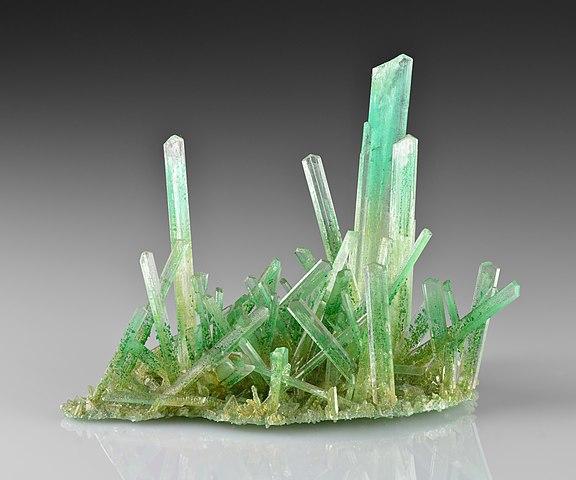
Gypsum does little to soften hard soils in home landscapes, as is often believed.
If you perform a quick Google search on gypsum use in home lawns, you will notice that many online home landscape forums and gardening sites claim gypsum to be an all-in-one solution to many common lawn/garden soil problems and issues.
We highly recommend that you do not believe everything they say!
When it comes to gypsum use in lawns and its ability to improve, especially soften compacted soil, tests conducted by different universities never come to a similar conclusion. Their findings are often far too shy of what many gardening websites claim.
Even many researchers disagree on the benefits of using gypsum in home lawns. However, then why is there so much hype about gypsum?
Gypsum Use In Agriculture
The hype is mainly due to the widespread use of gypsum in agricultural settings. However, it is essential to remember that gypsum works in agricultural lands because of the aggressive soil maintenance practices that are typically not used in home lawns.
For instance, soil in agricultural lands is often turned upside down when planting a new crop, a practice that will never be used (and should not be used) in home lawn settings. This is also partly why gypsum in farm and agricultural settings works so well in improving the overall soil structure, increasing drainage, and enhancing root depth.
However, once established, home lawns will never undergo such an aggressive treatment of turning the entire soil upside down. Therefore, gypsum will also not produce the dramatic results it has in commercial settings (agricultural lands) in home lawns.
Home soils have high organic content, heavy compaction, and soil layering, making it difficult for the gypsum to penetrate the ground and improve the soil structure. And lawns with coarse soils can actually be damaged if treated with gypsum.
In some situations, using gypsum in home lawns can also cause magnesium deficiency which can severely affect the health of the grass and other floral life.
RELATED: How To Fix A Patchy Lawn? Steps, Tips & Tools Needed | A Comprehensive Guide
Gypsum Can Sometimes Still Work!
It is not to say, however, that gypsum does not work at all on home lawns. Besides the uses mentioned above, gypsum increases water infiltration in saline soil.
Salt prevents water from penetrating deep into the ground and being absorbed by roots into the grass plants. It is where gypsum comes in!
The calcium and sulfate ions of gypsum remove excess salt from the ground. That way, the soil can absorb water and make it available to the grassroots.
The Myth Of Gypsum Magic
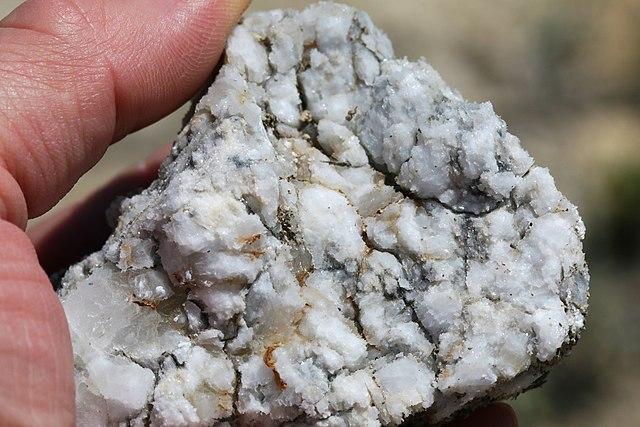
Since gypsum is simply calcium sulfate, could this chemical transform soil?
I recently watched a famous gardening show on TV. I learned that adding gypsum to my lawn soil will improve my soil compaction problem by changing the soil particle size, among many other amazing things. I wondered if that was true and did a bit of research.
I will share my findings here. Briefly, researchers have found:
- Gypsum’s effects are short-lived (often a matter of months)
- Gypsum will not improve water holding capacity of sandy soils
- Gypsum will not improve the fertility of acid or sandy soils
- Gypsum is variable in its effects on mature trees
- Gypsum can have adverse effects on mycorrhizal inoculation of roots
- Gypsum applied to sandy soils can decrease phosphorus and zinc transport
- Gypsum applied to acid soils can induce magnesium deficiency
- Gypsum can increase the leaching of iron and manganese
- Gypsum can increase the leaching of aluminum, contaminating nearby water bodies
- And lastly, gypsum does not usually change soil acidity
The myth of gypsum magic falls in the category of agricultural treatments misused in home settings. Gypsum treatment is rarely needed in non-agricultural areas.
You are much better off using organic mulch and other alternatives if you want to improve aeration and water infiltration in your lawn soil and overall soil structure.
How To Use Gypsum In Home Lawns?
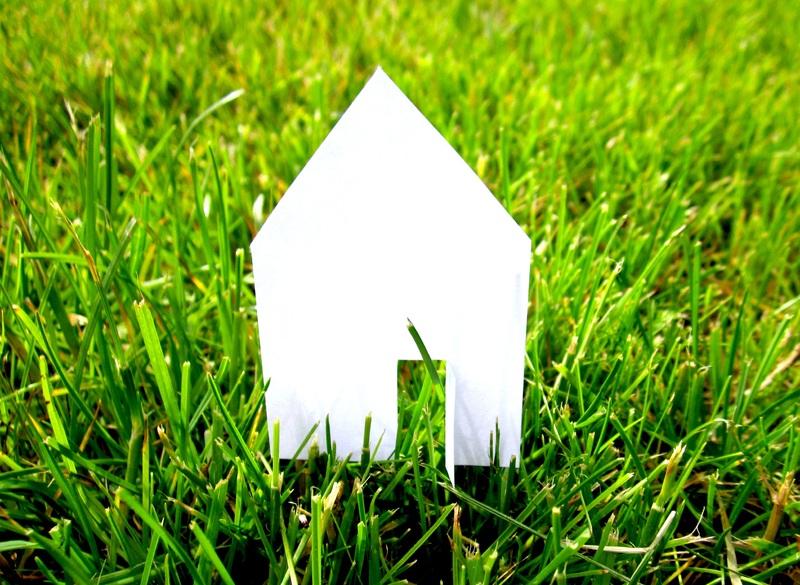
Never apply gypsum to your lawn without first testing the soil.
Now that you have learned everything there is to know about using gypsum in home lawns and turf settings, let’s see how you can use it when needed.
1. Find Out If Your Lawn Needs Gypsum
First, get the soil of your lawn tested by a good soil testing lab.
It will tell you what nutrients your lawn soil lacks and whether or not gypsum can help.
If the soil test shows that your lawn has a high clay content and is low in calcium, but at the same time high in sodium, your lawn may be a candidate for a gypsum application. However, if the clay soil is highly layered, gypsum application might not work.
Do not have access to a soil testing lab? Do not worry!
You can also tell if your soil needs gypsum by performing a quick home test!
Put some soil from your lawn in a glass container and shake it vigorously until the water becomes milky. Next, place the container still and wait for about five to ten minutes. If the water does not clear, chances are that your soil can use and needs gypsum.
2. Figure Out How Much Gypsum You Need To Apply
Once you have established that your lawn soil needs gypsum, the next step is to determine how much gypsum you will need to add to the ground to fix the issue.
The higher the clay in the soil, the more gypsum you will need to improve the soil structure.
So, depending on the amount of clay in the soil, you can treat anywhere from 200 to a thousand square feet of land using a standard retail 40-pound bag of gypsum.
3. Make Sure You Spread The Gypsum Pellets Correctly.
Once you have calculated how much gypsum you need, it is time to spread it.
While you can apply gypsum on your lawn manually using your hand, we highly recommend using a mechanical spreader to get the job done. Not only will this be easy and quick, but it will also result in a more uniform application giving better results.
So, start by adjusting your broadcast spreader to accommodate the pellet size of gypsum. Next, push the spreader at an average pace around your lawn, overlapping the spread pattern by five to ten inches to ensure complete coverage across the yard.
4. Water The Lawn To Activate The Gypsum Pellets
Gypsum will not do your lawn any good if it just keeps sitting on top of the grass or soil in your yard. It needs to dissolve into the ground for it to perform its action.
Therefore, water the grass once you spread gypsum pellets in the yard.
Make sure to give the lawn a proper soaking to ensure all the gypsum pellets dissolve and its minerals (calcium and sulfur) work deep into the lawn soil.
RELATED: Starting A Lawn Mower That Has Been Sitting For Years | A Complete Guide
Gypsum Vs. Lime For Lawns
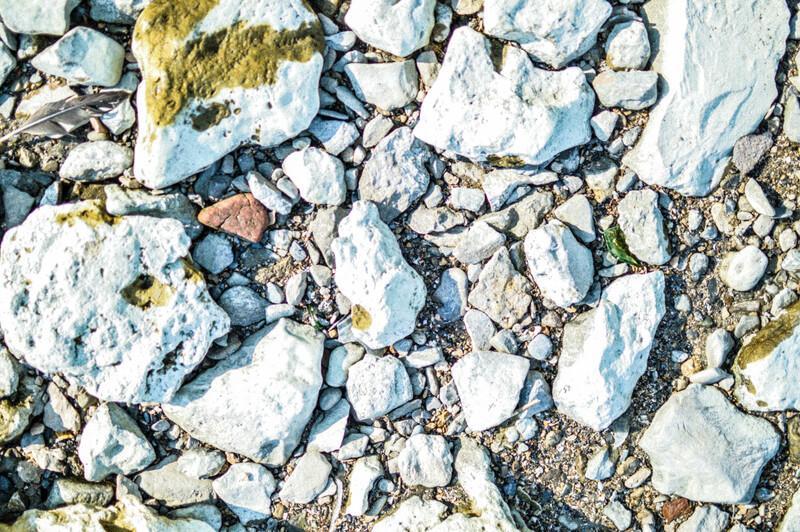
Lime works effectively to balance the pH level of your soil.
Despite what many gardening websites will have you believe, lime and gypsum can not be used alternatively. They have different applications and work in different ways.
So, you must understand how gypsum and lime differ, their ideal use scenarios, and how to use them correctly on a lawn. Let’s get started by talking a bit about lime!
Lime
The most common liming material used in lawn settings is lime. It comes in two forms which are different in the ratio of calcium to magnesium. The first one is calcitic limestone. Calcitic limestone is about five percent magnesium and 95 percent calcium.
In contrast, there is dolomitic limestone. It is about 15 to 45 percent magnesium and 55 to 85 percent calcium. Nevertheless, lime is often used to increase soil pH in home lawns.
Gypsum Vs. Lime: Which Material Should You Use?
When determining if you need to use lime or gypsum, perform a soil test.
Lime and gypsum both add calcium to the soil, but gypsum cannot increase the pH.
So, if the soil test shows that the pH of your soil is on the acidic side and lacks calcium, use lime. Howeveline, gypsum would be the better choice if the pH is alkaline.
The Bottom Line
Here is a quick sum-up of everything we have discussed so far:
- Adding gypsum non-sodic, coarse and sandy soils wastes natural resources and money and can adversely affect soil, plants, and ecosystem health.
- Do not gypsum or any other soil amendment material to the lawn soil without first getting a proper soil test to determine the soil nutrient deficiencies.
- In most cases, urban soils and lawn soil do not benefit immensely from gypsum.
- Gypsum does not affect soil pH whatsoever. So, please don’t use it for that!
- Gypsum works great for improving clay soil structure and reclaiming saline soils.
Frequently Asked Questions (FAQs)
How long does gypsum take to work?
Following gypsum application, it may take several months for clay soils to become softer. So, plan accordingly and start a few months ahead.
Are gypsum and lime the same?
Although both lime and gypsum add calcium to the soil, they are not the same. They have different chemical formulas, and lime changes soil pH, whereas gypsum doesn’t.
Is gypsum safe?
Gypsum is not harmful to animals or humans. You don’t need to wear gloves or masks when handling the material. It is a natural neutralizer that won’t harm your children or pets.
When should you apply gypsum?
Gypsum can be used at any time of the year, and you can do it anywhere from two to three times per year, depending on the requirements of your particular grass.
Can you use too much gypsum?
Adding excessive amounts of gypsum to your soil can be harmful since it can deplete the soil of essential minerals. Soil nutrients like iron, aluminum, and manganese could become unavailable if there’s too much gypsum, which might stunt plant development.
Sources For Further Reading
Gypsum as a soil amendment? Probably not | Purdue University Turfgrass Science at Purdue University. Retrieved December 24, 2022, from https://turf.purdue.edu/gypsum-as-a-soil-amendment-probably-not/
The Use of Gypsum and Lime on Lawns and Gardens. Iowa State University Extension and Outreach (2022). Retrieved December 24, 2022, from https://hortnews.extension.iastate.edu/2000/7-21-2000/limelawn.html
Backyard Gardener – Why Use Gypsum? – August 27, 2014. University of Arizona Cooperative Extension. Retrieved December 24, 2022, from https://ag.arizona.edu/yavapai/anr/hort/byg/archive/gypsum2014.html
Editor’s Recommendations
Buffalo Grass 101: Is It Any Good & How Can You Grow It In Your Yard?
What Is The Best Time To Plant St. Augustine Grass? The Ultimate Guide
When And How To Fertilize Your Vegetable Garden For The Best Results?







